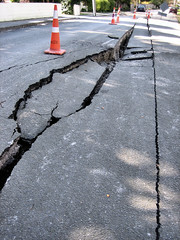
Search
Images for canterbury earthquakes; more images...
20100908-153842.jpg
Images, eqnz.chch.2010
None
20100908-154249.jpg
Images, eqnz.chch.2010
None
20100908-153944.jpg
Images, eqnz.chch.2010
None
20100908-153119.jpg
Images, eqnz.chch.2010
None
20100908-153400.jpg
Images, eqnz.chch.2010
None
20100908-153520.jpg
Images, eqnz.chch.2010
None
20100906-152246.jpg
Images, eqnz.chch.2010
None
20100906-152136.jpg
Images, eqnz.chch.2010
None
20100908-152852.jpg
Images, eqnz.chch.2010
None
20100908-154151.jpg
Images, eqnz.chch.2010
None
20100906-151855.jpg
Images, eqnz.chch.2010
None
20100906-114301.jpg
Images, eqnz.chch.2010
None
20100908-152528.jpg
Images, eqnz.chch.2010
None
20100908-152910.jpg
Images, eqnz.chch.2010
None
Fragility functions for buried pipelines in liquefaction-prone areas based…
Research papers, University of Canterbury Library
Motivation This poster aims to present fragility functions for pipelines buried in liquefaction-prone soils. Existing fragility models used to quantify losses can be based on old data or use complex metrics. Addressing these issues, the proposed functions are based on the Christchurch network and soil and utilizes the Canterbury earthquake sequence (CES) data, partially represented in Figure 1. Figure 1 (a) presents the pipe failure dataset, which describes the date, location and pipe on which failures occurred. Figure 1 (b) shows the simulated ground motion intensity median of the 22nd February 2011 earthquake. To develop the model, the network and soil characteristics have also been utilized.
RECOVERING FROM A WORST-CASE SCENARIO: SHOULD NEW ZEALAND IMPLEMENT A DISA…
Research papers, University of Canterbury Library
In response to the February 2011 earthquake, Parliament enacted the Canterbury Earthquake Recovery Act. This emergency legislation provided the executive with extreme powers that extended well beyond the initial emergency response and into the recovery phase. Although New Zealand has the Civil Defence Emergency Management Act 2002, it was unable to cope with the scale and intensity of the Canterbury earthquake sequence. Considering the well-known geological risk facing the Wellington region, this paper will consider whether a standalone “Disaster Recovery Act” should be established to separate an emergency and its response from the recovery phase. Currently, Government policy is to respond reactively to a disaster rather than proactively. In a major event, this typically involves the executive being given the ability to make rules, regulations and policy without the delay or oversight of normal legislative process. In the first part of this paper, I will canvas what a “Disaster Recovery Act” could prescribe and why there is a need to separate recovery from emergency. Secondly, I will consider the shortfalls in the current civil defence recovery framework which necessitates this kind of heavy governmental response after a disaster. In the final section, I will examine how
20100906-153858.jpg
Images, eqnz.chch.2010
None
20100906-121051.jpg
Images, eqnz.chch.2010
None
20100906-121116.jpg
Images, eqnz.chch.2010
None
20100906-123043.jpg
Images, eqnz.chch.2010
None
20100906-123953.jpg
Images, eqnz.chch.2010
None
20100906-123039.jpg
Images, eqnz.chch.2010
None
20100906-120647.jpg
Images, eqnz.chch.2010
None
20100906-122901.jpg
Images, eqnz.chch.2010
None
20100906-123056.jpg
Images, eqnz.chch.2010
None
20100906-154409.jpg
Images, eqnz.chch.2010
None
20100906-121128.jpg
Images, eqnz.chch.2010
None
20100906-123204.jpg
Images, eqnz.chch.2010
None
20100906-120608.jpg
Images, eqnz.chch.2010
None
20100906-154952.jpg
Images, eqnz.chch.2010
None



